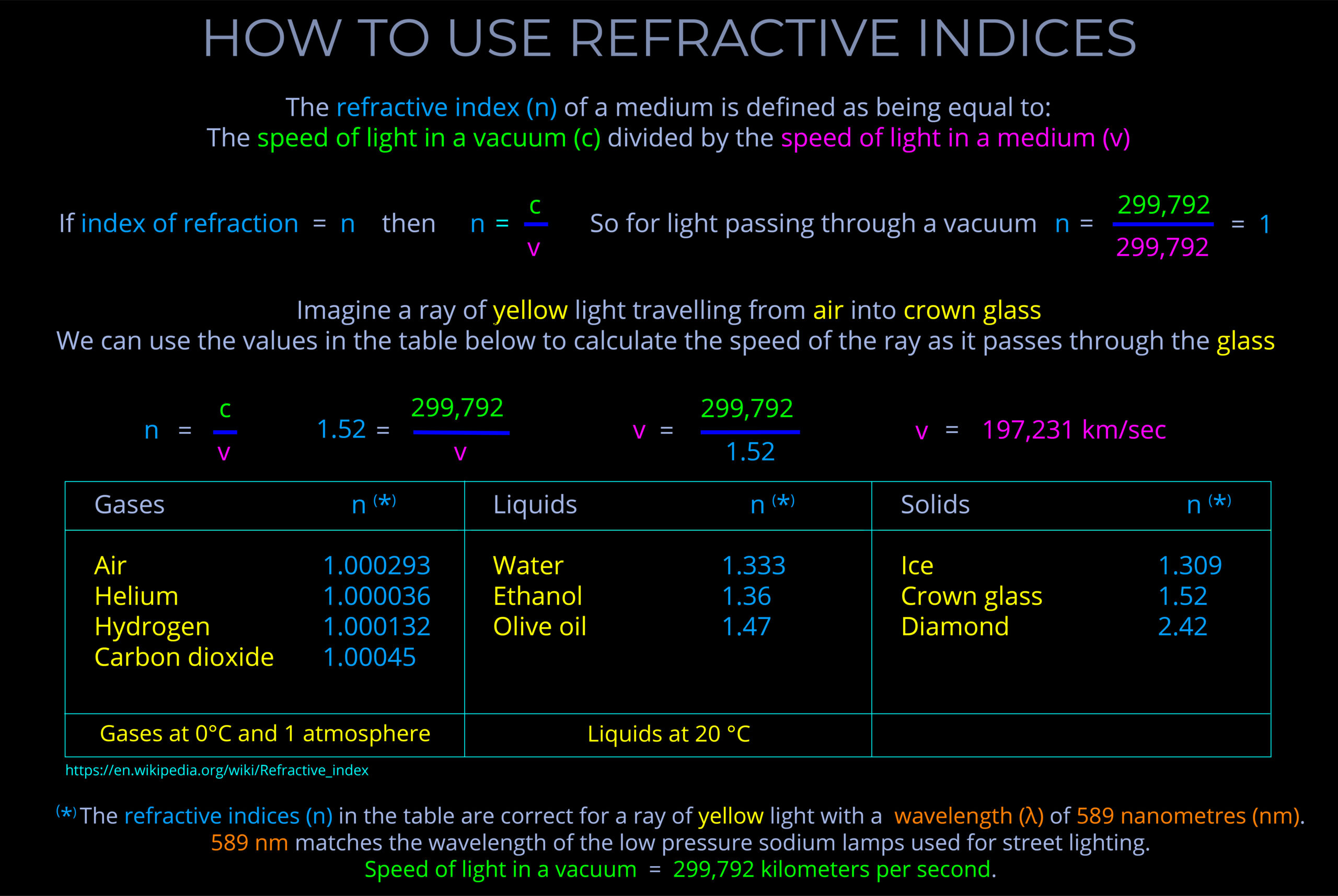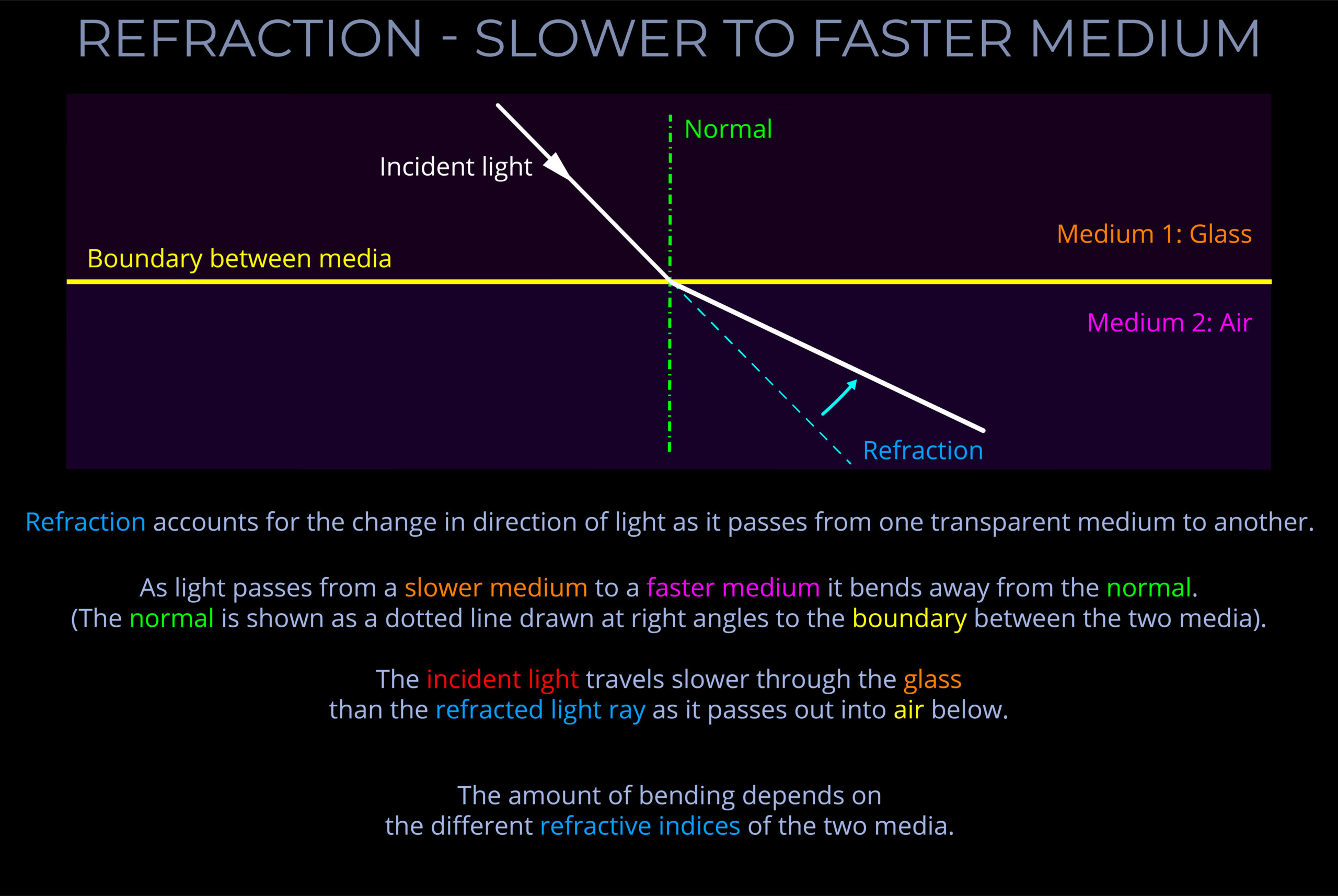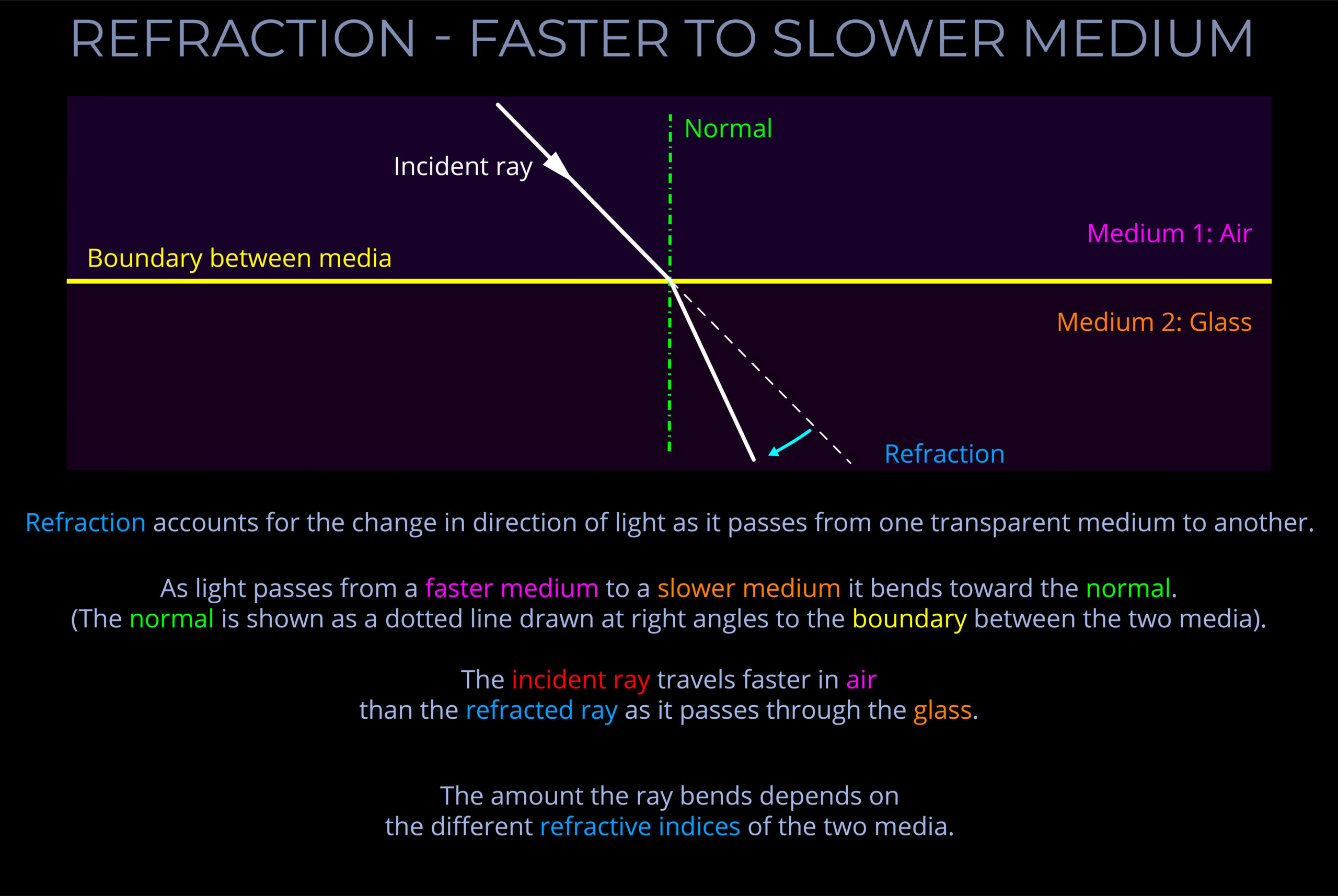The law of refraction, also known as Snell’s law, is a fundamental principle in optics that describes how light bends as it travels between two different materials, such as air and water.
The law states that when light crosses the boundary between two transparent materials, the ratio of the sines of the angles of incidence and refraction is a constant. This constant value is equal to the ratio of the refractive indices of the two materials. The refractive index of a material tells us how much light bends as it passes through that material.
- Refractive index is influenced by the wavelength of light, the material’s density, and its temperature.
- The law of refraction is useful because it allows us to predict how light will bend at the boundary between two materials.
- We can use this law to calculate the angle of refraction if we know the angle of incidence and the refractive indices of the two materials. This is important for understanding how lenses and prisms work.
- For example, if we know the angle at which light strikes a lens (angle of incidence) and the refractive indices of air and the lens material, we can use Snell’s law to calculate the angle at which the light exits the lens (angle of refraction).
- Transparent media all have different refractive indices (index of refraction) that measure how much the speed and direction of light changes as it passes out of one and into another.
- Factors that affect the refractive index of a medium include the wavelength of light passing through it, its optical density and its temperature.
The formula
- So the law of refraction explains the relationship between the angle of incidence as light approaches the boundary of one medium with a particular refractive index and the angle of refraction as it enters the second with a different refractive index.
- It derives a formula from the fact that when light of a particular frequency crosses the boundary between any pair of media, the ratio of the sines of the angles of incidence and the sines of the angles of refraction is a constant in every case.
- The formula is: n1 sin θ1 = n2 sin θ2, where n1 and n2 are the refractive indices of the two media, and θ1 and θ2 are the angles of incidence and refraction, respectively.
- Because there are only four terms in the law of refraction if three are known then the fourth can be calculated.
- So, for example, it is possible to calculate the angle of refraction associated with the use of a lens or prism if the angle of incidence and the refractive indices of the first medium (air) and the second (optical glass) are known.
- Refractive indices can be measured experimentally using techniques like refractometry, and they are unique to each medium and can be used to identify unknown substances.
References
- The law of refraction, also known as Snell’s law, is a fundamental principle in optics that describes how light bends as it travels between two different materials, such as air and water.
- The law states that when light crosses the boundary between two transparent materials, the ratio of the sines of the angles of incidence and refraction is a constant. This constant value is equal to the ratio of the refractive indices of the two materials. The refractive index of a material tells us how much light bends as it passes through that material.
- Refractive index is influenced by the wavelength of light, the material’s density, and its temperature.
- The law of refraction is useful because it allows us to predict how light will bend at the boundary between two materials.
- We can use this law to calculate the angle of refraction if we know the angle of incidence and the refractive indices of the two materials. This is important for understanding how lenses and prisms work.
- For example, if we know the angle at which light strikes a lens (angle of incidence) and the refractive indices of air and the lens material, we can use Snell’s law to calculate the angle at which the light exits the lens (angle of refraction).
- Transparent media all have different refractive indices (index of refraction) that measure how much the speed and direction of light changes as it passes out of one and into another.
- Factors that affect the refractive index of a medium include the wavelength of light passing through it, its optical density and its temperature.


